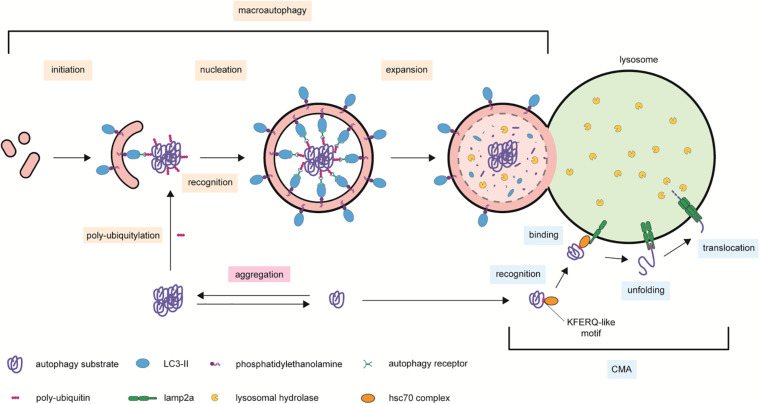FIGURE 2.
Autophagic processes contributing to cellular proteostasis. Protease-resistant protein complexes and aggregates are delivered to lysosomal degradation by macroautophagy. This process is mediated by scaffold autophagy receptors able to bind to ubiquitinated proteins and the cleaved and phosphatidylethanolamine-conjugated LC3 present on the forming autophagosome. The complex is then encapsulated within the lumen of the double-lipid by-layer autophagy organelle, which expands and fuses with lysosome membranes for acidic hydrolases degradation. In chaperon-mediated autophagy (CMA), cytosolic proteins bearing a KFERQ-like domain recognized by the unfolding chaperon HSC70 are escorted to LAMP2A on the surface of lysosomal membranes. Two consecutive recruitments of LAMP2A molecules form a module that translocates the CMA substrate to the hydrolase-rich lumen of lysosomes. Symbols used are specified in the legend on the bottom of the scheme.

